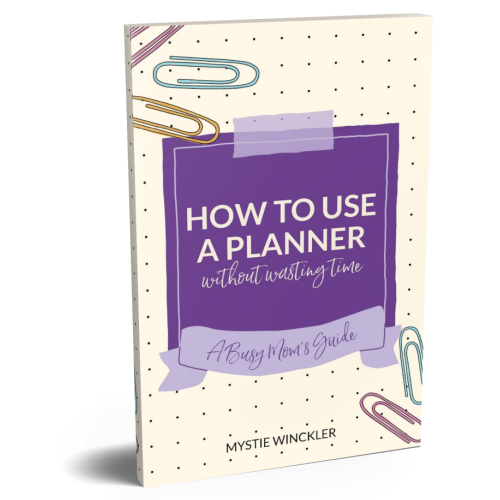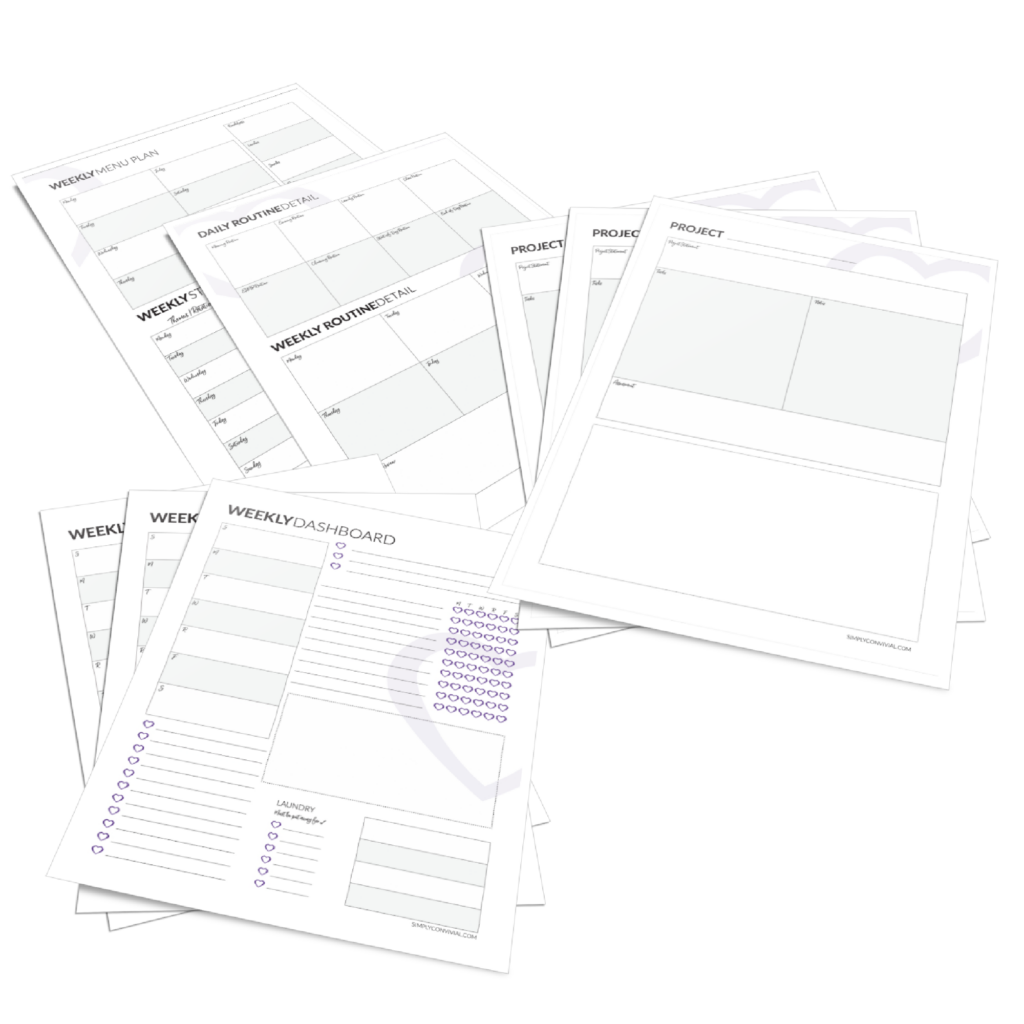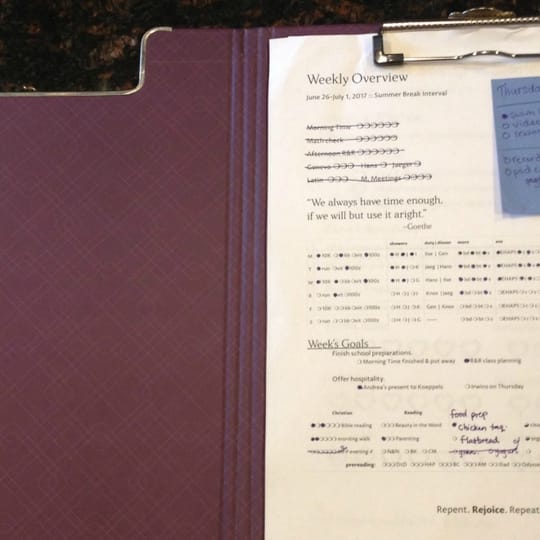
What’s Working Now: My Weekly Planner Page
For nearly a year I gave all-digital planning another go. I tried a few different configurations, a few different apps and options – all in the name of research! – with mixed success.
I tried Evernote for a weekly summary note and a place to keep routines.
I tried a spreadsheet version of my previous paper weekly spread.
I tried using all Omnifocus, all the time (except for routines, which then plummeted).
Over and over again, I return to the same conclusion: If you don’t look at your list, it does you no good.
What makes a weekly planner work
The plain truth of the matter is that it is much harder to have a digital daily or weekly planner in front of your face. Even the glow of the screen can feel like a film barrier between it and your mind sometimes. Seeing the little icon, even with notification numbers, doesn’t count as “checking” the list – and sometimes actually increases resistance and reluctance to look at it at all.
So, back to paper I went, at least for the daily and weekly overview. I suppose I should be relieved that the best way really is the one I teach in my course Work Your Plan!
I looked at various people’s weekly templates and fooled around with several format options, but landed back at my previous layout. It had worked for me, and it left a blank spot for my daily note to be added. I liked that.
So, here’s the overview, then I’ll give you a little tour, section by section.
Weekly Planner Overview
This one-page summary sits on a covered clipboard and usually lives on the kitchen peninsula, though I can close it up and stick it in my command center cupboard at the end of the day or before guests arrive.
It leaves a spot for my daily note – and I’m still using post-its instead of index cards. I went a little too overboard with all the space of an index card. Plus, I like the pop of color on my page with the post-it.

Now for a section-by-section detailed tour.
Weekly Planner Page: Top Section
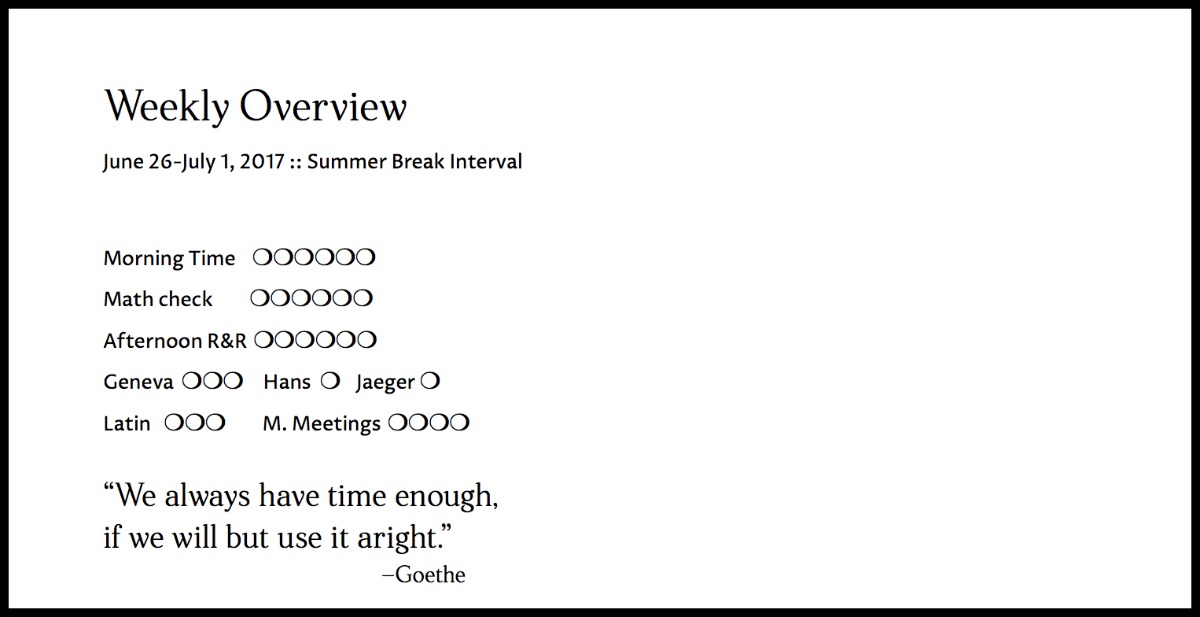
The top section is all in a left-hand column to leave room for a daily sticky note.
In the past, I used this area for tracking new habits for each interval. However, at this point, I know what my habitual routines should be and I need to resist the temptation to keep adding new ones. Instead, I need to just stay on top of the most important ones.
So now this top section includes a summary of the weekly homeschool time chunks I am responsible for making happen. There are three boxes next to Geneva, for example, because three times a week she needs phonics lessons. Now, on the weekly time budget, I have those three times reserved for Monday, Tuesday, and Thursday, but this overview with merely three boxes allows me to “catch up” and still “earn credit” for doing those 5-10 minute lessons, even if not at the scheduled time.
Of course, I think no planner page is complete unless it has a motivational quote, so that’s included, too. It also helps to keep that right-hand white space a convenient size.
Weekly Planner Page: Middle Section
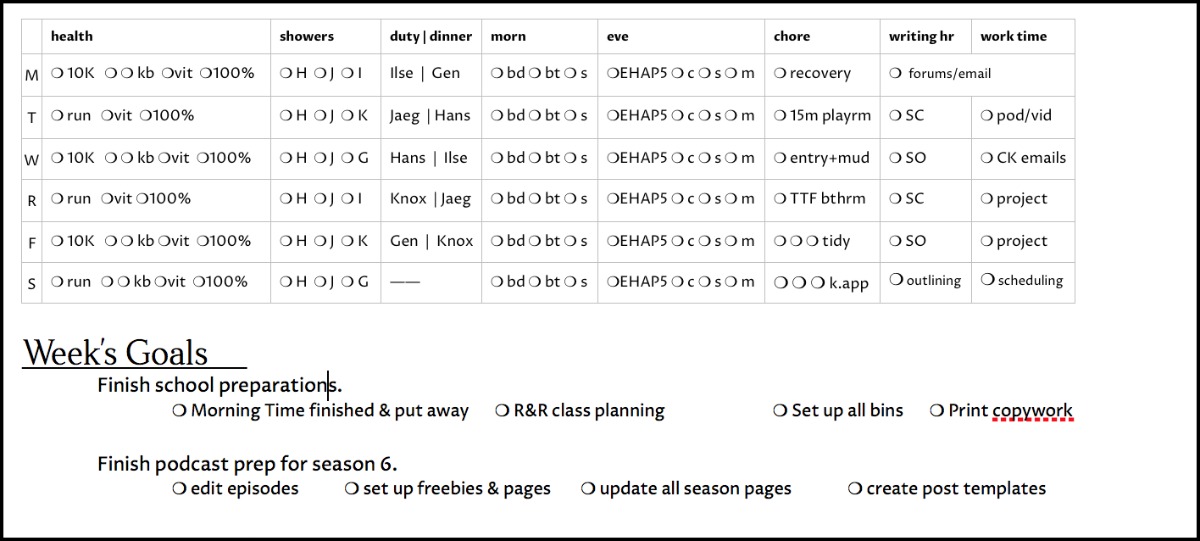
The middle section contains first my set of routines to keep tabs on and second a spot for my weekly project goals.
I use abbreviations next to the routine boxes just to keep them small and shorthand. For example, the evening routines are c for counters, s for sweep, and m for mop.
I was having a hard time remembering to remind the kids to shower. I only have to actually bathe one myself, but the others need prompting, and they each have different frequency needs. So I added a small section here to keep track. This works well because the day of the week I try to make it happen is there, but if they end up showering a different day, I can still mark the next circle – for those who need it less than daily, that is.
“Day” signifies whose day it is to get the mail, make lunch, choose the chore music and other special daily duties – they each get a weekday. “Dinner” reminds me who is dinner helper that day.
And, in the health section, 100% means I 100% stuck to my eating plan. I’m supposed to plan the day before what I will eat, and then stick to it. That’s the current strategy, anyway. The nice thing about a printable like this is I can adjust it when what I’m tracking changes. “KB” = kettlebell swings, 20 in a set.
One thing that’s important to remember in planning and productivity is that a project is a big goal made up of smaller tasks. Particularly as mothers at home, we rarely sit down and accomplish a project goal at one go. However, if we break it up into smaller bites, we can make progress throughout the week.
The next section – with room only for 2 goals – includes a space to state the goal (in a complete sentence, of course) and then break it down into 3-4 tasks that can actually be checked off in a manageable amount of time.
Weekly Planner Page: Bottom Section
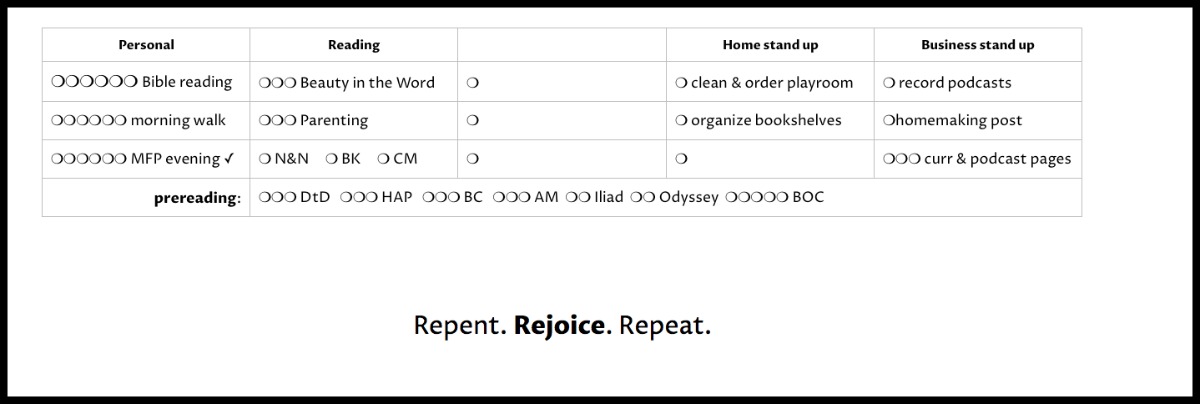
The bottom of my weekly checklist includes things I want to track, including reading and tasks to do that week. One section is blank to fill in based on what’s happening and needed that week. I am way behind (almost in plural months now) on my online book clubs. Even though I really want to participate, other things quickly crowd out my reading time, and then I avoid checking the forums, and then I get out of the habit, and then catching up seems overwhelming. Simply keeping tabs on each book I’m currently reading – especially books I’m reading slowly over the whole year – helps break it up so it doesn’t feel vague and overwhelming.
“Stand-up” notes a sort of informal accountability. These are the things I’ll mention to a friend or two, “This week I’m going to focus on x and y” – that helps, but if I don’t remember what I said, I still might not do it. Then, when those tasks are done, one by one, I can text or vox and say, “I did it!” It’s pretty amazing how just sharing those small commitments and victories helps momentum and progress.

